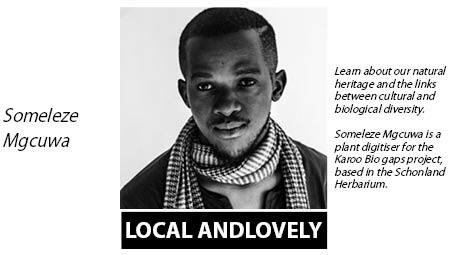Name: Sansevieria hyacinthoides (L.) Druce
Family: Ruscaceae
Common names: Engl. Bowstring-hemp, Mother-in-law’s-tongue, Snake-plant; Afr. Aambeiwortel, Skoonma-se-tong; Xho. Isikholokotho
Common garden and container plant.
Description
Succulent stemless perennial up to 600mm in large colonies. Rhizome sturdy, fibrous and bright orange. Leaves are erect, rigid, loosely clustered, often with a slightest twist, flat, dark green in colour with paler markings and margins red. Flowers are in dense inflorescence, ± 450 mm; flowers ± 30 mm, greenish white to pale mauve, ± 6 in clusters, open at night (September-May). Fruit are orange berries.
Conservation status
According to the SANBI (South African National Biodiversity Institute) Red list of South African Plants, Sansevieria hyacinthoides was not selected in any one of four screening processes for highlighting potential taxa of conservation concern for detailed assessment and was hence given an automated status of Least Concern (L.C.). http://redlist.sanbi.org
Distribution and habitat
This species occurs naturally in eastern and northern parts of South Africa where it grows in dry bush, scrub and shaded areas. Provincial distribution: Eastern Cape, Gauteng, KwaZulu-Natal, Limpopo and Mpumalanga.
Derivation of name and historical aspects
Sansevieria name after Raimondo di Sangro, Prince of Sansevero (30 January 1710- 22 March 1771) was an Italian nobleman, inventor, soldier, writer, scientist, alchemist, and freemason best remembered for his construction of the Chapel of Sansevero in Naples. Raimondo was the seventh Prince of Sansevero, born at Torremaggiore into a noble family. His father was Antonio, Duke of Torremaggiore, and his mother was Cecilia Gaetani of Aragon. His mother was died shortly after his birth. From the age of 10, he was schooled at the Jesuit College in Rome. He died in Naples in 1771, his death being hastened by continuous use of dangerous chemicals for his experiment and inventions. In 1794, the Swedish naturalist Carl Peter Thunberg named the genus Sansevieria after him. Hyacinthoides means resembling a hyacinth.
Isikholokotho derives from isikhotsholo, the name of green snake, and alludes to the similar colouring of the leaves.
Ecology
Browsed by rhinos, antelopes; rhizome eaten by mole rats. Weaver birds strip the leaves for fibre to build nest. Fibre from leaves can also be made into binding twine.
Uses and cultural aspects
Hyacinthoides is popularly known as remedy for ear infections, ear ache and sometimes toothache. It is also traditionally used to treat hemorrhoids (perhaps mother-in-law knows best!), ulcers and intestinal worms. Other treatments include stomach disorders and diarrhea.
Growing Sanservieria hyacinthoides
The snake plant is a fast grower and drought-resistant. It grows very easily, needs little attention and is therefore perfect for large gardens. It can be mass planted between the rocks in a rockery, or as hardy ground cover. It prefers sun or partial shade, in any soil type with added compost. Water sparingly. It also does well in a container indoors. Great care must be taken not to over water. It is easily propagated form seeds, cuttings or by division of large clumps. http://pza.sanbi.org/sansevieria-hyacinthoides
References and further reading
Dold, T., Cocks, M. 2012. Voices from the Forest, Celebrating Nature and Culture in Xhosaland. Jacana Media, Sunnyside, Auckland Park, South Africa.
Pooley, E. 2005. A Field Guide to Wild Flowers, KwaZulu-Natal and the Eastern Region. The Flora Publications
Trust, c/o Natal Herbarium, Botanical Gardens Road, Durban 4001.
Van Wyk, B.E., van Oudtshoorn, B., Gericke, N. Medicinal Plants of South Africa. Briza Publications, Pretoria
https://en.wikipedia.org/wiki/Raimondo_di_Sangro


